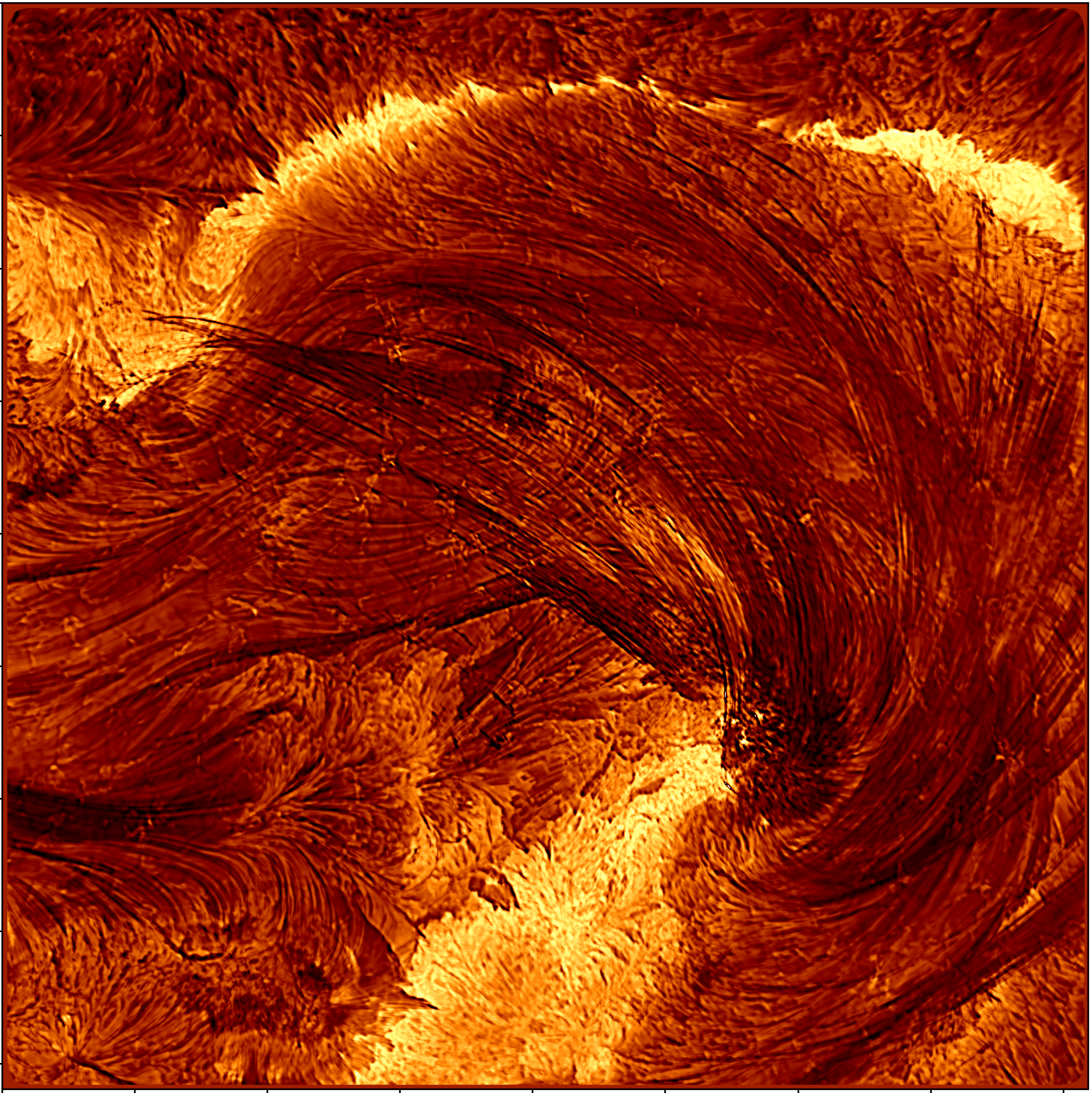The smallest magnetic loops ever seen in the sun’s corona — imaged for the first time by the National Science Foundation’s Daniel F. Inouye Solar Telescope — could be the bottom floor of the machinery that powers the ferocious flares that routinely blast out from our star.
“It’s a landmark moment in solar science,” said Cole Tamburri of the University of Colorado, Boulder, in a statement. “We’re finally seeing the sun at the scales it works on.”
Basically, solar flares are produced when magnetic field lines that loop through the sun’s outer atmosphere, the corona, grow taut and snap, releasing energy before reconnecting once again. This has been known for some time, but the details involved in magnetic reconnection and solar flares, however, still require some working out. One big question has been: How small can these coronal loops go, and what role could these miniature loops play in powering solar flares?

The Daniel K. Inouye Solar Telescope (DKIST), operated by the National Science Foundation’s (NSF) National Solar Observatory, has now imaged hundreds of coronal loop strands that are just 29.95 miles (48.2 kilometers) wide on average, and some could be as thin as 13 miles (21 kilometers). These are right on the limit of the DKIST’s resolution, which is itself more than 2.5 times sharper than the next best solar telescope.
“Before Inouye, we could only imagine what this scale looked like,” said Tamburri. “Now we can see it directly.”
The forest of small loops was seen in hydrogen-alpha light by DKIST’s Visible Broadband Imager in the aftermath of an X-class flare — the most powerful category of flare that the sun can unleash — seen on Aug. 8, 2024.
“This is the first time the Inouye Solar Telescope has ever observed an X-class flare,” said Tamburri. “These flares are among the most energetic events our star produces, and we were fortunate to catch this one under perfect observing conditions.”

How these small loops play into the process of magnetic reconnection isn’t yet clear, but now that scientists know that they are there, they can start to fit them into their models of how the sun operates. It may be that these small loops are a fundamental building block of the sun’s magnetic architecture that creates the flares.
“If that’s the case, we’re not just resolving bundles of loops, we’re resolving individual loops for the first time,” said Tamburri. “It’s like going from seeing a forest to suddenly seeing every single tree.”
The image of the coronal loops shows the power of the Inouye Solar Telescope, and Tamburri himself is supported by the Inouye Solar Telescope Ambassador Program, which is funded by the NSF and aims to give young researchers expertise they can take into the broader solar community as they further their careers.
However, storm clouds are gathering on the horizon. The budget proposed by the US government for the fiscal year 2026 would see the Inouye Solar Telescope receive a massive shortfall in funding, down from $30 million to $13 million, which the director of the NSF’s National Solar Observatory, Christoph Keller, says is not enough to keep the Inouye Solar Telescope open.
Should the telescope have to close, it wouldn’t just be its spectacular images of the sun that we will lose, but also the expertise of the researchers that it helps train. The loss of the telescope and its scientists could damage future solar research for years to come. However, if this is the Inouye Telescope’s last hurrah, then it is going out on a high.
Tamburri and his team describe their observations of the small flares in a paper published on Aug. 25 in The Astrophysical Journal Letters.
Source link


